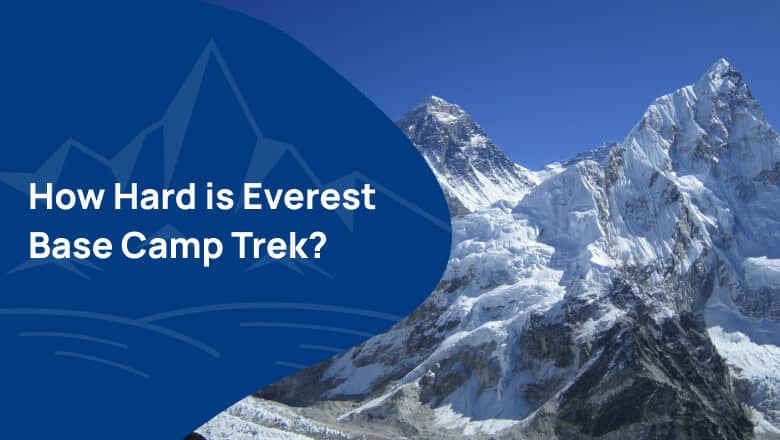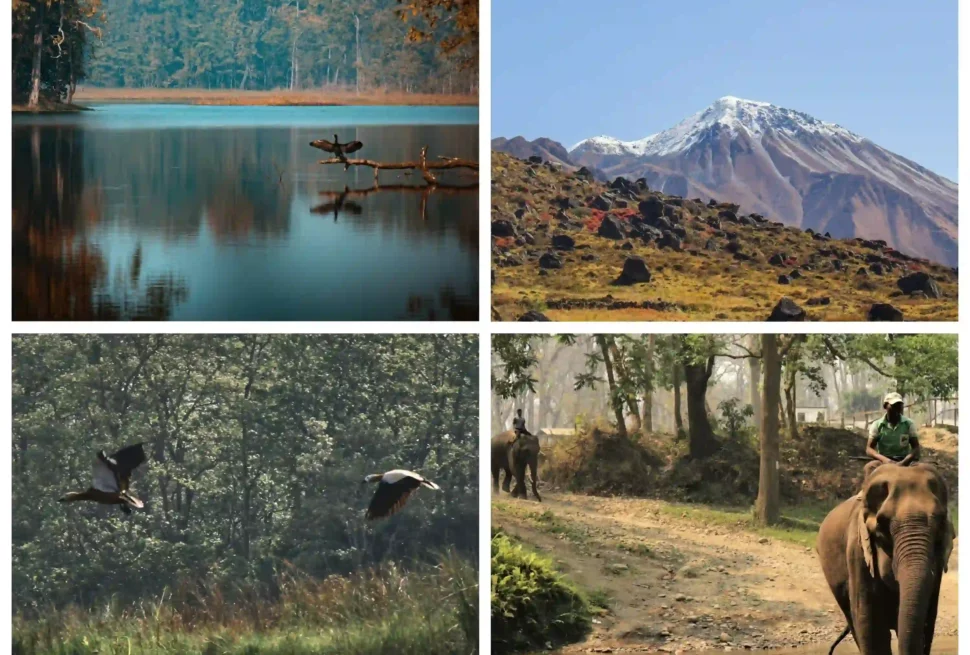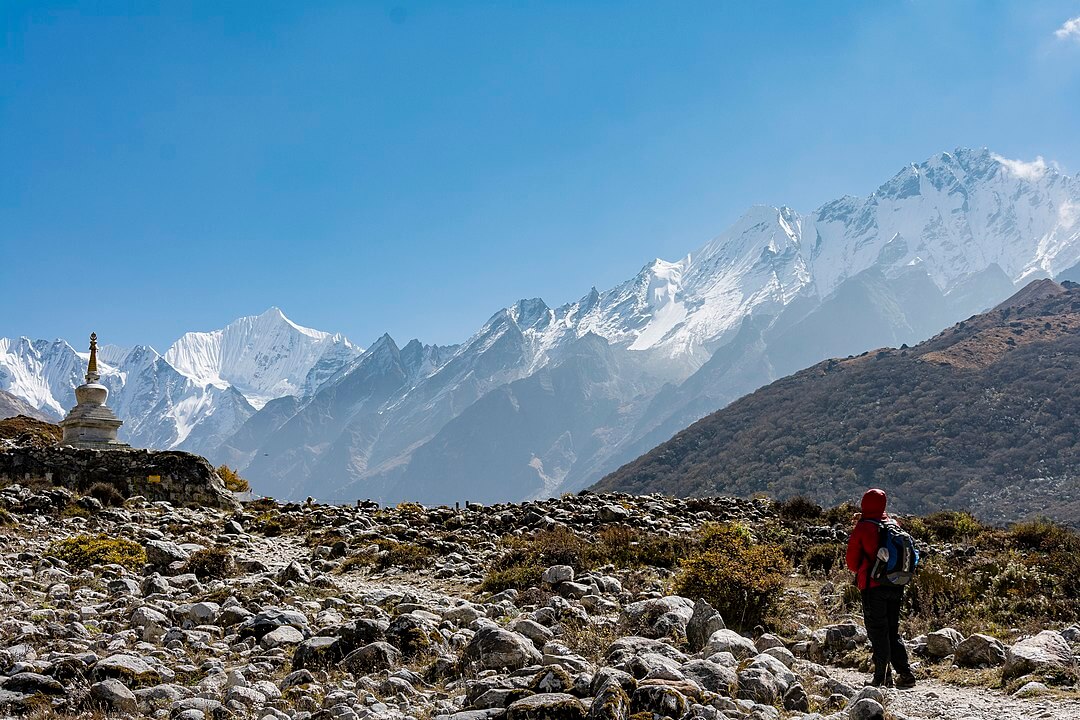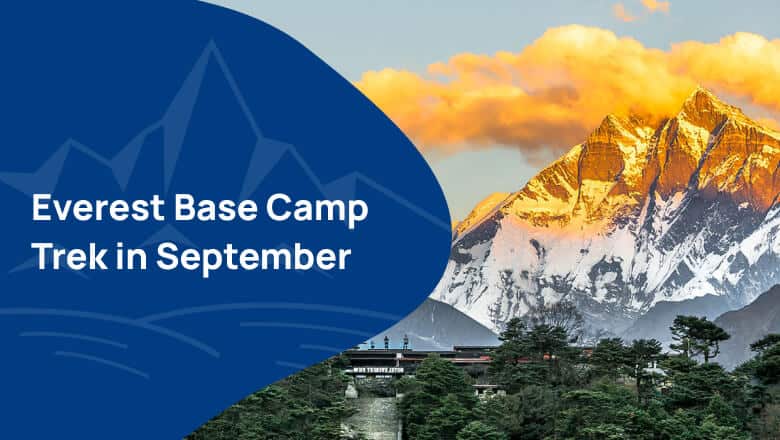Hey! As an experienced trekker, I have been sharing my knowledge on various trekking topics in previous articles. So today, let’s talk about how hard is Everest Base Camp trek.
I know that trekking to the Everest Base Camp is a dream for many, but it can also be intimidating due to the trail’s difficulty level.
But don’t worry! I’m here to guide you through it all.
In this article, we’ll take a closer look at the Everest Base Camp trek difficulty and break down the different aspects of the trail that make it challenging.
In addition, I understand that some of you may be new to trekking, so I’ll try to keep things simple and easy to understand. But, at the same time, I’ll also share some insider tips and tricks that can help even seasoned trekkers to make the most of their EBC journey.
So, whether you’re in your 20s or 50s, a fitness enthusiast or a casual hiker, this article is for you.
Contents
Do you have any question about trip to Nepal?
Tell us about your trip to Nepal and what you expect from it. We will answer your questions in 24 hours and help you design a trip with a comfortable itinerary to meet your needs best.
Factors Affecting the Difficulty Level of the Trek
1. Elevation
The Everest Base Camp trek is a high-altitude trek and therefore involves climbing up to altitudes of 5,643 meters. At higher altitudes, the air pressure decreases, making it harder to breathe, and it can cause altitude sickness, which can be fatal if not treated properly.
Therefore, you should be aware of the signs and symptoms of altitude sickness and take necessary precautions. It would be best to acclimatize yourself gradually, allowing the body to adjust to the altitude.
The below-provided table indicates the elevation of the different places like Lukla, Namche and Lobuche during the EBC Trek:
| Place | Elevation | Distance(approx.) |
|---|---|---|
| Lukla | 2,860 m | 0 Km |
| Phakding | 2,610 m | 9 Km |
| Namche Bazaar | 3,440 m | 7 Km |
| Tengboche | 3,870 m | 10 Km |
| Dingboche | 4,410 m | 12 Km |
| Lobuche | 4,940 m | 8 Km |
| Gorak Shep | 5,160 m | 4.5 Km |
| Everest Base Camp | 5,364 m | 3 Km |
2. Physical Fitness
The fitter you are, the more comfortable the trek will be because the Everest Base Camp trek requires endurance, strength, and stamina that involves walking for extended periods on steep terrain and at high altitudes, which can be physically demanding.
Thus, physical fitness is one of the crucial factors that affect the difficulty of the Everest Base Camp trek. Therefore, it is recommended that you engage in regular exercise and fitness training for at least three months before embarking on the trek.
3. Terrain and Distance
The Everest Base Camp trek covers a distance of approximately 130 kilometres (80 miles); at the same time, it involves trekking through various terrains, including rocky paths, steep ascents and descents, and suspension bridges over raging rivers.
You should wear sturdy and comfortable hiking shoes, bring walking poles to aid in balance and stability, and pack light to minimize the weight carried during the trek because trekking at high altitudes and on uneven terrain can be physically challenging. At the same time, you should also be prepared for long days of walking.
4. Weather and Temperature
As there is a variation in the weather condition of the Everest region, you get to experience the weather condition of all seasons during your trek to the Everest Base Camp.
At the same time, you might have to go through various health issues and numerous weather conditions, such as visibility disturbances, causing situations like losing the track due to road navigation issues and increasing other natural calamity risks for you.
| Lukla (2,860m) | Namche (3,440m) | Lobuche (4,950m) | |
| Max Avg Temp | 3.4°C | 3.4°C | -4.2°C |
| Min Avg Temp | -5.3°C | -5.3°C | -12.4°C |
| Precipitation | 44 mm | 44 mm | 54 mm |
| Precipitation Days | 5.8 days | 5.8 days | 2.7 days |
The table below gives you a general view of the weather conditions and the crowds in the Everest Region in different months.
| Month | Weather | Minimum Temperature (°F) | Maximum Temperature (°F) | Precipitation (mm) | Wind Speed (miles/hr) | Crowd | Recommendation |
|---|---|---|---|---|---|---|---|
| January | Cold | 17 | 43 | 14 | 7.4 – 11.8 | Very Low | Can Consider |
| February | Cold | 23 | 43 | 20 | 7.4 – 11.8 | Very Low | Can Consider |
| March | Slightly warm | 27 | 44.6 | 30 | 9.3 | Medium | Recommended |
| April | Warm | 36 | 50 | 33 | 8.7 | High | Highly Recommended |
| May | Warm | 44 | 59 | 54 | 9.3 | High | Highly Recommended |
| June | Rainy | 50 | 61 | 135 | 9.9 | Very Low | Not Recommended |
| July | Rainy | 54 | 59 | 285 | 9.9 | Very Low | Not Recommended |
| August | Rainy | 54 | 61 | 277 | 9.9 | Very Low | Not Recommended |
| September | Moderate | 50 | 59 | 155 | 4.9 – 6.8 | Medium | Recommended |
| October | Pleasant | 29 | 58 | 32 | 4.9 – 6.8 | High | Highly Recommended |
| November | Pleasant | 27 | 41 | 7 | 4.9 – 6.8 | High | Highly Recommended |
| December | Start Snowing | 20 | 43 | 14 | 11.8 | Low | Recommended |
If you’re planning to go on the Everest Base Camp Trek but want to know more about it first, we have a detailed Everest Trekking guide that can help. It has all the information you need before starting your journey. Check it out and learn from our expertise to make your trip a success.
Challenges of Everest Base Camp Trek
1. Length of the trek
As mentioned earlier, the trek to Everest Base Camp takes around 12-14 days, covering a distance of approximately 130 kilometres round trip from the starting point at Lukla.
The hike involves walking for an average of 5-6 hours a day, and the route consists of steep ascents and descents, rocky and uneven terrain, and suspension bridges over deep gorges.
2. Altitude
The biggest challenge of the Everest Base Camp trek is the altitude. The base camp is located at an altitude of 5,364 meters, and the route involves gradual acclimatization to the high altitude. Therefore, it is crucially important to be aware of the symptoms of altitude sickness and to take the necessary precautions to avoid it.
3. Weather Condition
The Everest Base Camp trek is a particularly challenging trek that takes you through various terrains, weather and temperature, which can cause several issues for trekkers. Some of the factors of weather & temperature affecting the difficulty of the Everest Base Camp trek, apart from altitude sickness and sunburn, are:
Hypothermia
The temperature at higher altitudes can drop below freezing, precisely during the night. Trekkers who are not dressed adequately or prepared for cold temperatures may develop hypothermia, which can be life-threatening.
Dehydration
The low humidity and cold temperatures can cause trekkers to become dehydrated, leading to a range of health issues such as headaches, dizziness, and fatigue.
Snow blindness
Snow blindness is a temporary loss of vision in trekkers due to damage to the eyes caused by the bright sunlight reflecting off the snow or UV rays.
Frostbite
Trekkers should carefully keep their extremities warm and dry to avoid frostbite. Frostbites are also caused by the cold temperatures, precisely on extremities such as the fingers and toes of trekkers.
Heavy snowfall
During your trek, you may encounter heavy snowfall, particularly during winter, making the trail difficult to navigate and increasing the risk of avalanches.
Therefore, you should be cautious of potential risks associated with heavy snowfall. Thus, proper preparation, including adequate clothing and hydration, is crucial for a safe and successful trek.
4. Khumbu Cough
Khumbu cough is also considered one of the significant challenges of the Everest Base Camp trek and is a common condition caused by exposure to cold and dry air at high altitudes. The Khumbu cough can last for several weeks or even months, depending on the severity of the inflammation and the duration of the exposure to high altitude.
Therefore, trekkers and climbers are advised to acclimatize gradually, stay well-hydrated, wear a scarf or mask over the mouth and nose, and seek medical attention if symptoms persist to prevent this condition.
5. Peak Crowd Season
Generally, the Everest Base Camp trekking season lasts from late March to early May and from September to November. Thus, the number of people visiting the Everest region escalates, making it difficult for trekkers to find accommodation in hotels and tea houses during the peak-crowd season.
As a result, many trekkers have to resort to camping in tents which can be daunting, especially for those not used to camping in harsh mountain conditions. In addition, the lack of proper facilities and the cold temperatures can make it challenging to get a good night’s sleep, which is crucial for trekkers to acclimatize properly.
6. Trail Condition
When it comes to trail conditions, the first thing you need to consider is an awareness of the environment and its conditions, particularly weather hazards such as avalanches or rockfall, two of the most common causes of trail conditions while trekking.
Another factor is navigation and planning. A high level of navigation skills during treks is vital and can save you from deadly situations. In addition, having knowledge about terrain features and weather conditions can help you make decisions that will reduce the risk associated with trail conditions.
Not to forget, during peak season, the trail of the Everest Base Camp trek can become crowded and congested, making it difficult to pass for other trekkers and navigate through narrow sections of the track.
How to Make the Everest Base Camp Trek Successful?
Here are some tips to help you make the most of your EBC trek:
1. Exercise and Workouts
First, start with regular exercise and workouts such as running, cycling, and swimming, which can help to improve cardiovascular fitness and stamina, which will be required during the trek.
At the same time, strength training exercises such as squats and lunges can help strengthen the leg muscles, which will be put under considerable strain during the trek.
2. Practice Hiking
Having some prior experience in hiking before attempting the Everest Base Camp Trek is undoubtedly effective. Therefore, practice hiking on rough terrain and gradually increase the distance covered. It will help you to build tolerance and strength, which will be required during the trek.
3. Acclimatization Practice
The best approach to prevent altitude sickness on the Everest Base Camp trip is to acclimatize properly. For those who don’t know what Acclimatization is. It is the process of allowing your body to adjust to the changes in altitude and the corresponding decrease in oxygen levels.
When you ascend to higher altitudes, the air pressure decreases, and less oxygen is available. This decrease in oxygen levels can lead to altitude sickness, which can cause symptoms such as headaches, nausea, and shortness of breath.
Therefore, Acclimatization allows your body to gradually adjust to the lower oxygen levels, helping to prevent altitude sickness. This process involves taking rest days at higher elevations to allow your body to adapt to the changes in altitude.
4. Pack Smart
Considering the limited luggage allowance, you should pack smartly. Don’t forget to bring all those necessary things like sturdy hiking boots, warm clothing, sunscreen, and water purification tablets. At the same time, carrying a backpack with a rain cover is advisable, and weight should not exceed 10-15 kg.
5. Stay Hydrated
Staying hydrated is crucial to avoid altitude sickness. Drink 3-4 litres of water daily to keep your body hydrated and acclimatized.
6. Respect the Environment
Everest Base Camp has a fragile environment which takes you through some of the most pristine natural landscapes in the world. Therefore, be sure to respect the environment by staying on the trail, not littering, and following Leave No Trace principles.
7. Respect the Local Culture
Nepal is a diverse and culturally rich country, and during the trek, you pass through several Sherpa villages. Be sure to respect local customs and traditions, such as removing your shoes before entering a temple or shrine and asking for permission before taking photographs of people or religious sites.
Additionally, you can also learn a few basic Nepali phrases, such as “Namaste” (hello) and “Dhanyabad” (thank you), which can go a long way in showing respect to the local people.
8. Choose the Right Trekking Agency
When it comes to planning a trekking trip, choosing the right agency is crucial. It can make all the difference in ensuring your journey is safe, enjoyable, and successful.
Firstly, it’s essential to make sure the agency is licensed and authorized by the appropriate government authorities. This ensures that the agency meets certain safety standards, follows ethical practices and is well-equipped to handle any situation during your trek.
So, when you’re choosing a trekking agency, be sure to do your research and check that they have the necessary licenses and authorizations.
Ready to take on the challenge of the Everest Base Camp trek? Take advantage of our comprehensive guide to conquering the Everest Base Camp trek with 50 expert tips.
CONCLUSION
So there you have it, folks! The Everest Base Camp trek is undoubtedly not for the faint-hearted, but with the proper preparation, determination, and guidance, it is definitely doable.
To summarise, I’ve covered the various difficulties and challenges you may encounter during the trek, from altitude sickness and extreme weather conditions to the physical demands of the trail. In addition, I have also discussed how to conquer these obstacles, with tips on acclimatization, hydration, and proper gear.
Perhaps most importantly, I’ve emphasized the crucial role of choosing a reliable and trustworthy trekking agency. Remember, selecting the right agency is half the battle won when it comes to planning a successful and enjoyable trekking trip.
At the end of the day, the Everest Base Camp trek is an incredible adventure that will push you to your limits and reward you with breathtaking views and unforgettable experiences. So if you’re up for the challenge, go for it! Just make sure you’re prepared, stay safe, and respect the local culture and environment.
Our Everest Base Camp Packages
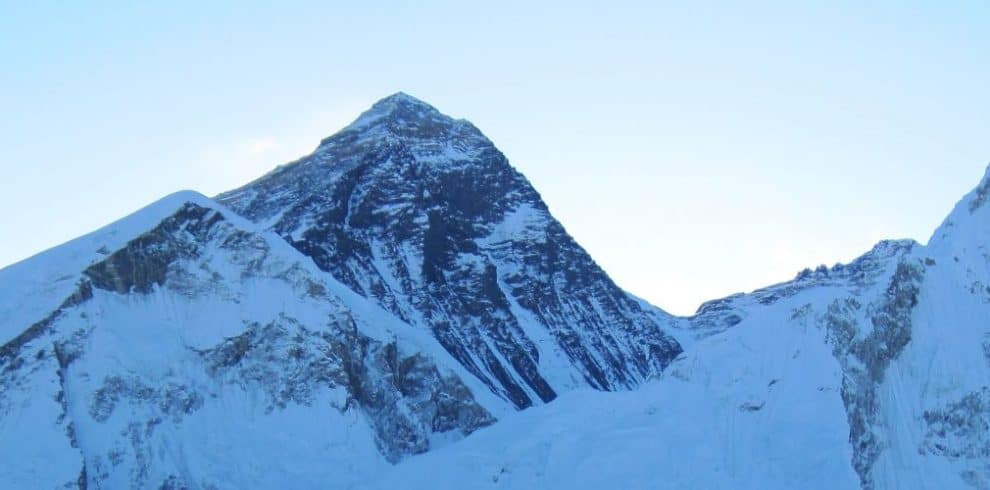
Everest Base Camp Trek is a classic trekking adventure in the foothills of the world’s highest mountain, Mount Everest. Trudging along the rugged trails of the Himalayas, decorated with mountains and landscapes, this trek is undoubtedly one of the best walks on earth. Regarded as the most popular trek in Nepal, Everest Base Camp Trek extends for 15 days. Along the way, you’ll get to marvel at some of the world’s highest massifs, including Mt. Everest, Lhotse, Ama Dablam, Thamserku, Cho Oyu, Pumori, Nuptse, and Makalu. Not only that, but this trek combines the…
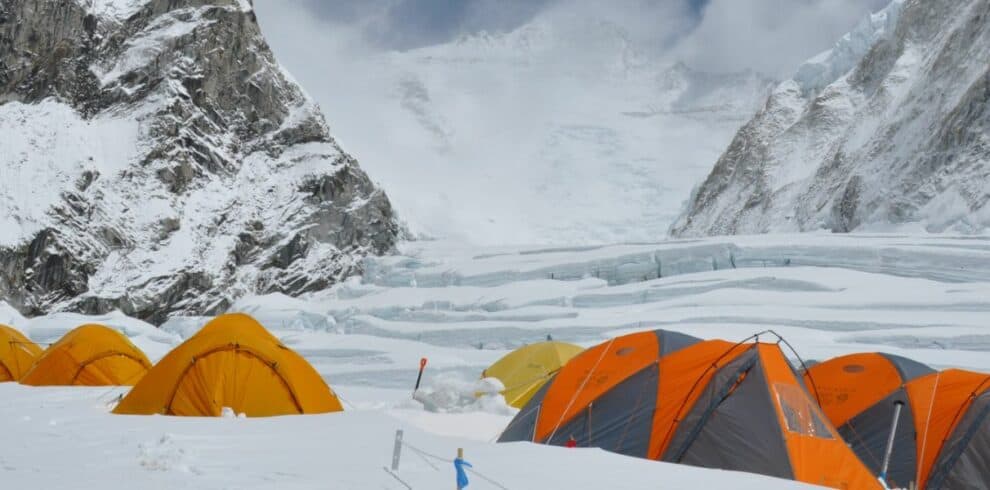
Everest View Trek is probably the most famous trek in the Himalayan region of Nepal. It is one of the most adventurous and historic trekking trails which presents you with the mesmerizing views of mighty Mt. Everest. Everest region also encircles some other magnificent peaks like Mt. Lhotse, Mt. Cho Oyu, Mt. AmaDablam and Mt. Makalu. Namche bazaar is a gateway to the Everest region. Trekking through the route, you will come across cascading waterfalls, rivers, and forests filled with rhododendron (National Flower of Nepal), pine trees, etc. You can also explore Sagarmatha National…
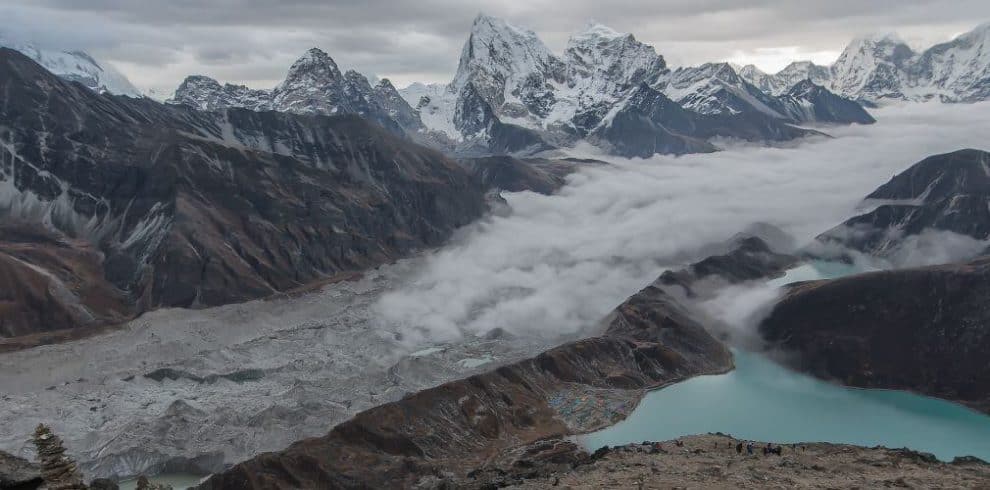
Everest High Passes Trek, also known as the Everest Circuit Trek, is one of the most comprehensive adventures in the Himalayas of Nepal. On this trek, you will be traversing through the rugged trails of the lower Khumbu region, navigating three high Himalayan passes, and standing at the foothills of the world’s highest massifs. Often regarded as one of the most demanding teahouse adventures in Nepal, the Everest High Passes Trek requires you to scale three high passes above 5,000 meters, namely Renjo La Pass, Cho La Pass, and Kongma La Pass. Among the…

The Everest Base Camp luxury heli Trek is designed for people who are short on time but still want to scale the base of the tallest mountain in the world. The trek is one of the most esteemed treks in the world.Towering peaks,majestic vistas, deep gorges with crystal blue rushing rivers and the wonderful Sherpa people all go to make this trek a very memorable one,We recognise that not all people have the time to complete the full trek so this trek is designed for them. The park is situated 120km northeast of Kathmandu.and…
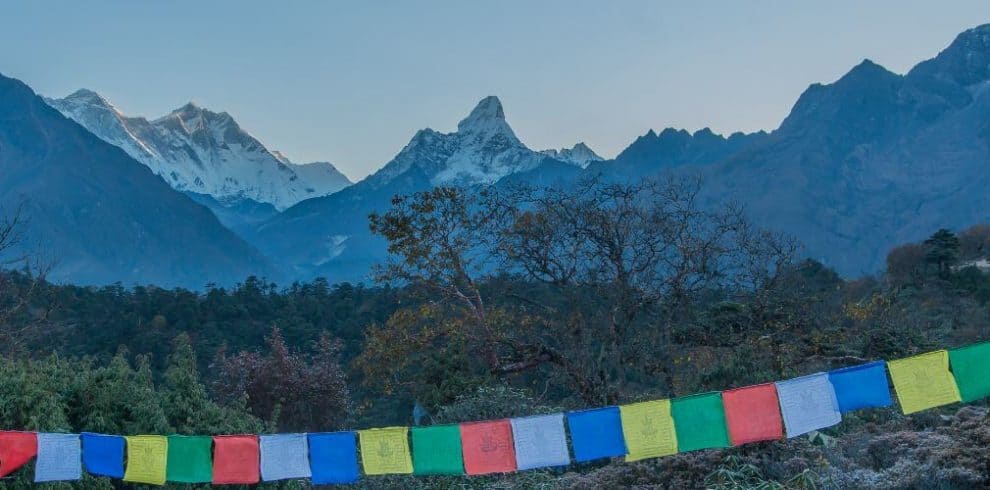
Yoga is the perfect mixture and a superb union of the delicate soul and the supreme soul. Yoga trekking integrates the natural world with one's inner self. The ideal outcome is a fulfilling experience that awakens senses for deeper awareness and greater relaxation beneath the towering Himalayas. Yoga has many varied, subtle, yet incredibly superior advantages. Strength and flexibility are enhanced. Yoga stretches your muscles and relieves low back pain, stress, and anxiety. It also makes sleeping better. Additionally, the yoga trekking program is appropriate for people of all ages and offers a once-in-a-lifetime…

